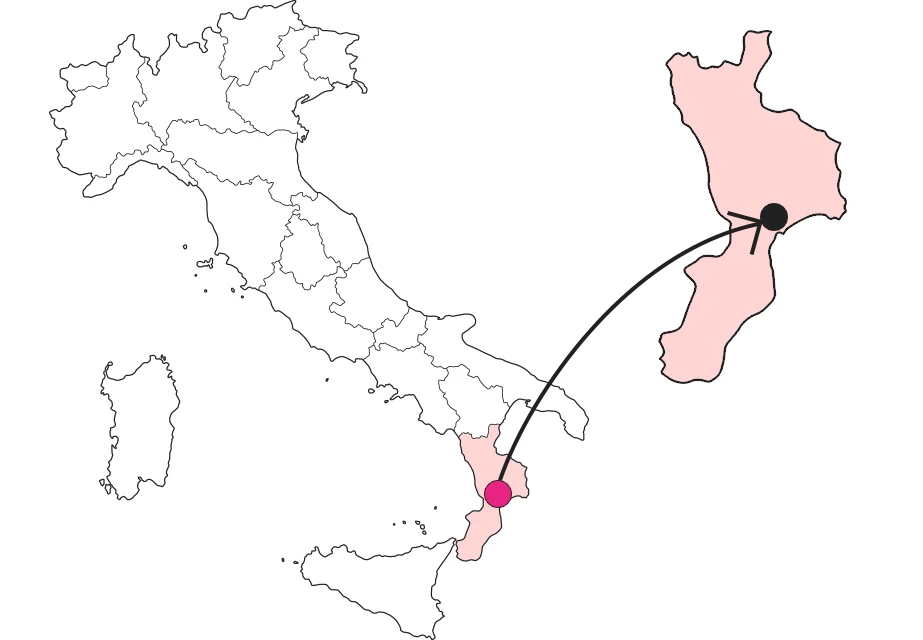SHARRYLAND


Between St. Sòstene and St. Andrew - The Alaca River
It originates among lle Serre in the beautiful Lacina basin and staggers toward the sea to the delight of canyoning enthusiasts


Where

A natural corridor between the Serre and the Ionian Sea
Alaca, as the maps read, or Alaco, as it is locally called. The river originates in the heart of the Calabrian Serre on the Lacina plateau. At one time it was formed by the convergence of waters flowing down from that mountain basin; today it has rather assumed the role of an emissary of the artificial lake that partly occupied it at the end of the last century. Downstream of the dam, the waters enter a narrow valley between the wooded ridges that descend toward the Ionian Sea, subsiding only near the coast when its bed widens, taking on the typical physiognomy of the Calabrian fiumare. Twenty-one kilometers, to the lake at its mouth, marking the border between San Sòstene and Sant'Andrea Apostolo dello Ionio.
A succession of waterfalls and natural pools
From a hiking point of view, it is the most impervious stretch that deserves attention. The riverbed is a succession of large granite boulders that force the water to the torment of continuous shudders. The result is a picturesque succession of pools and small waterfalls interrupted by jumps up to twenty meters high that make the river scenery even more spectacular. As a backdrop, intact forests of holm oaks, the evergreen oaks typical of Mediterranean regions, and large chestnut trees, witnesses to the not-so-distant time when their cultivation was a source of livelihood for the local population.
From the mountain that was to the daredevils of canyoning
Today, canyoning, or canyoning as it is called, is practiced along the Alaco, the river version of mountaineering strictly reserved for the most skilled sportsmen. Alternatively, having a good leg anyway, one can follow the paths once trodden by lumberjacks and shepherds that from San Sòstene and Sant'Andrea climbed to the Piani della Lacina and then descended toward Spadola, Simbario and Brognaturo. Along the way one encounters interesting signs of the past, such as the castagnare, stone cottages used for drying fruits, but what undoubtedly holds sway is nature, especially flora, in the rapid transition between the Serre and the Ionian Sea.
Enter the Map of Italy's Undiscovered Wonders and find treasures where you least expect it... Inspire, Recommend, Share...
The Map thanks:
PSC 2014-2020 del Ministero del turismo - Avviso “Montagna Italia” - Progetto le Montagne del sole - Codice CUP J38J22000450008


